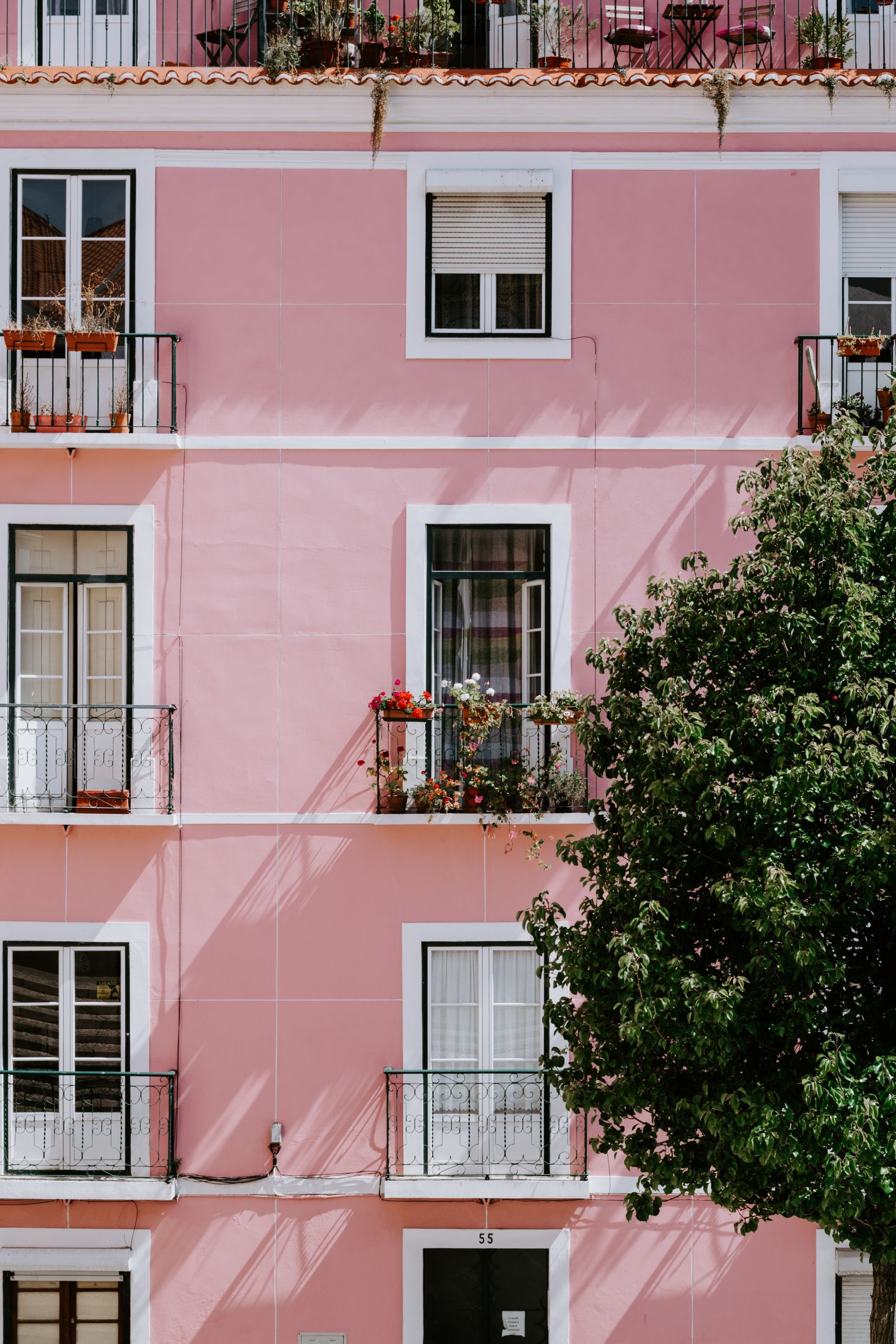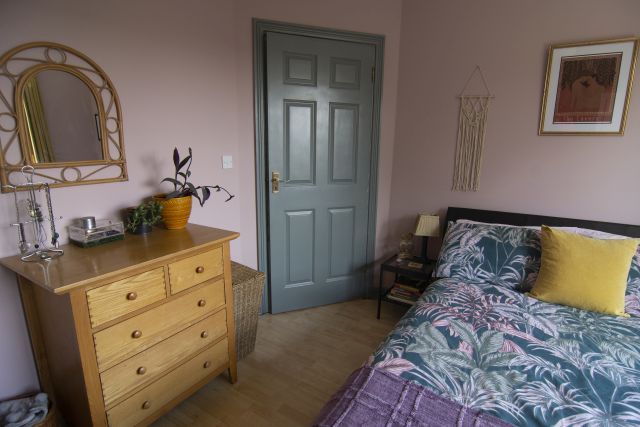
“If hugs were a colour, they would be pink.”
~ Karen Haller, The Little Book of Colour
psychology of pink
Culturally, the colour pink has a few established connotations. And maybe it’s time to rethink them. In this blog, I’m going to look at why that might benefit us. Exploring the psychology of pink, let’s consider when to use it in our home decor, when not to, and how to use it to its best effect.
Colour, Culture & Psychology of Pink
We tend to think of colour in visual terms because we encounter it in our lives as a visual element. But on levels we aren’t consciously aware of, all the colours under the rainbow – and their infinite tints, tones and shades – impact us in meaningful ways. Beyond our aesthetic appreciation for colours, they imbue our body-mind systems with different qualities.
The upshot of this is that colour can have a positive or negative effect on us, depending on levels of exposure and cultural context, as well as personal taste.
In western society, pink be a tad divise because of its long-running cultural association with young girls and the feminine in general. It often doesn’t have the same appeal for adult women, and heterosexual males are typically conditioned from childhood to regard it as emasculating.
Interestingly, though, the pink-for-girls and blue-for-boys rule in western socities is actually less than a century old. Prior to that it was the reverse. And in some eastern cultures today pink is associated with masculinity – something that seems unimaginable to those of us raised to view it as belonging to the realm of little girls.
But in fact, neither pink nor blue are inherently masculine or feminine. But both do have specific effects on our psyche. And with each (and every colour) the intensity and underlying tone contributes to those effects.
psychology of pink
Pink, and its effects
Far from being “weak”, pink is a colour than can enhance our health and wellbeing.
Pink is proven to have a calming effect on the mind and body, helping reduce feelings of anger, aggression, and anxiety. We’re talking about the light to medium pinks here, which are often used in hospitals, prisons, and mental health facilities to create a sense of tranquility and relaxation. Spending just 15 minutes in a room pink room can reduce heart rate and blood pressure, and feelings of aggression. And the effect can last for up to 30 minutes after leaving the pink room.
Regardless of our personal mental health, a great reason for all of us to embrace pink is that it promotes a sense of nurturing and empathy. When it comes to bringing out our softer and more caring sides, gender shouldn’t be a factor. We all need to experience and express this side of ourselves. And so, whether it feels culturally appropriate or not, pink is a great colour for men to also become more open to.
However, too much pink can be emasculating. So for some men, or anyone who needs to work on their self confidence, painting the walls of a room pale pink, or bubblegum pink, may be too much. But there could be room for some kind of pink in the furniture, artwork and décor.
For those who want to bring out their strongest qualities while still holding their femine power, bolder shades such as hot pink will be more effective than soft, baby pinks. Again, it might be a good idea to limit its use…the temptation might be to go strong with hot pink in the bedroom. But the primary function of this space is supporting a restful night’s sleep. So rather than going all out, use touches of hot pink – maybe in your dressing area…or in your bedding on date nights.
There is a place and a context for all the variations.
psychology of pink
Ways to use pink in your home
Instead of having a blanket ban against the colour (or indeed any colour), it makes more sense to be mindful of the intensity and quantity. When it comes to decorating our homes, we should always bear in mind the function of the room, and the personality types of those using it, when selecting the colour palette. This shouldn’t be any different when considering if, where and how to include pink.
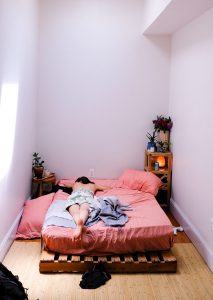
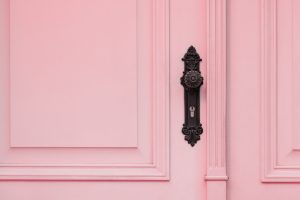
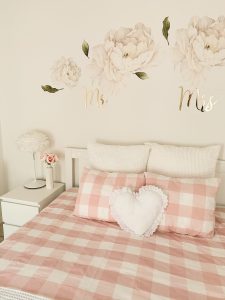
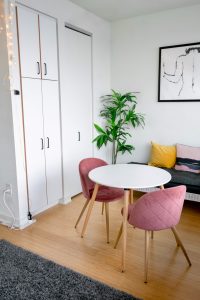
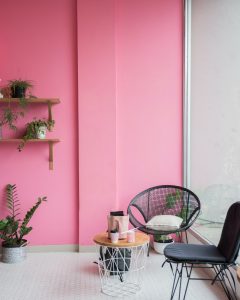
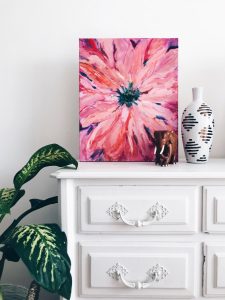
Think about the room’s function and the kind of energy you need the space to generate. If it’s a room where the main activity is about down-time (living rooms and bedrooms) then you want to support a yin energy. For this you’re going to need more subtle pinks.
On the other hand, in rooms where you want a livelier yang energy, you can use stronger, bolder pinks. Maybe the kitchen, dining or play room.
Soft pinks – use on the walls, ceilings and even doors and woodwork. Bedrooms are a particularly good choice for a lot of subtle pink. It doesn’t have to feel too feminine – if you have a partner who wouldn’t feel comfortable in an overly feminine space, be sure to choose the right shade together. And balance it out with other colours, in your curtains, bedding, rug, and artwork so that it doesn’t feel overwhelmingly pink. Just ensure the overall palette incorporates colours that promote a relaxing atmosphere.
Bold pinks – use on accent walls. And remember, walls don’t have to be painted. A pink-patterned wallpaper can introduce the effect you want without feeling too overpowering. But if a wall feels too much, stick with your soft furnishings, artwork, maybe a rug on the floor. If you want a strong pop of bold pink, think about a piece of furniture such as an armchair. Just be sure to include neutral colours in the overall colour palette to balance out the stronger pinks. And use the 60/30/10 rule….60% main colour (not hot pink), 30% secondary colour (could be a subtle pink) and 10% accent colour (this is where you can go bold with your pink).
Personality types – colour psychology categorises personality types according to seasons. And our seasons influence our aesthetic tastes. This includes the kinds of colours we’re drawn to. Generally, spring and summer personalities will be drawn to lighter and subtler hues, while autumn and winter will favour stronger. So in deciding on what pinks to use where, and how, you want to consider this as well as the function of the space. I have a quick and easy quiz on this link if you’d like to check out your seasonal personality type.
Regardless of gender or personality type, there is a pink for everyone. And when chosen mindfully and applied correctly it can bring a great deal of positive qualities to our homes and our wellbeing.
psychology of pink
psychology of pink
Thank you for reading. You may also be interested in:
Key colour effects to consider before hitting the DIY stores.
If you want to be notified whenever I post, be sure to subcribe to my newsletter.
You might also like to check out these free resources:
Guide to Budgeting your Home Makeover
interior design limerick ireland
interior design county clare ireland
interior design ireland
affordable interior design
psychology of pinkpsychology of pink
